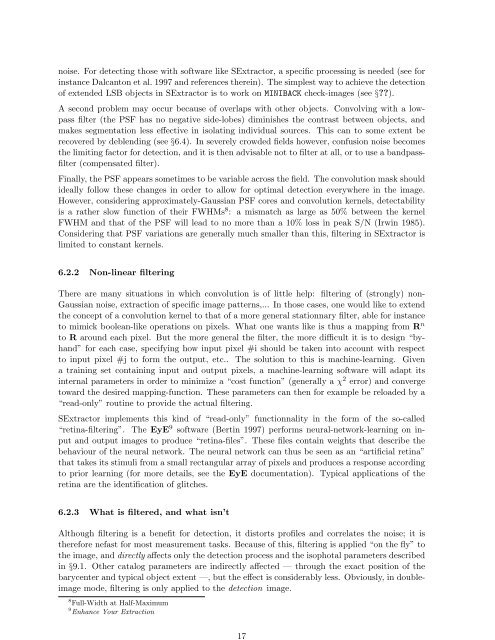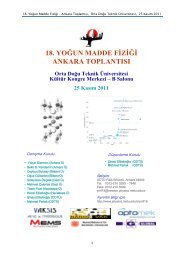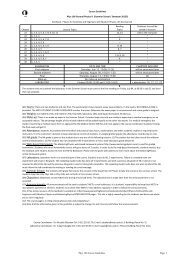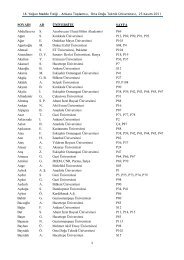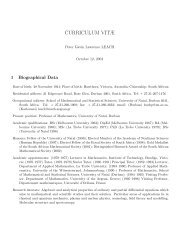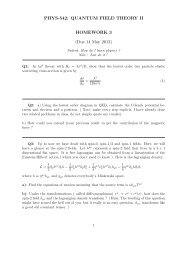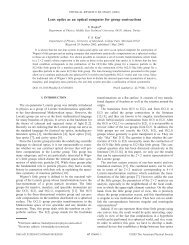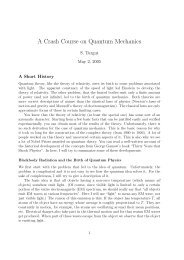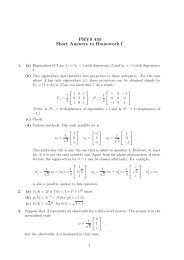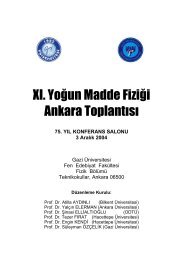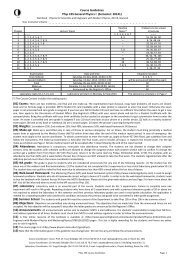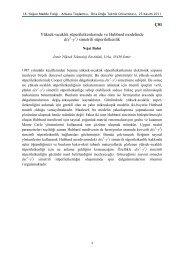SExtractor Draft - METU Astrophysics
SExtractor Draft - METU Astrophysics
SExtractor Draft - METU Astrophysics
- No tags were found...
Create successful ePaper yourself
Turn your PDF publications into a flip-book with our unique Google optimized e-Paper software.
17noise. For detecting those with software like <strong>SExtractor</strong>, a specific processing is needed (see forinstance Dalcanton et al. 1997 and references therein). The simplest way to achieve the detectionof extended LSB objects in <strong>SExtractor</strong> is to work on MINIBACK check-images (see §??).A second problem may occur because of overlaps with other objects. Convolving with a lowpassfilter (the PSF has no negative side-lobes) diminishes the contrast between objects, andmakes segmentation less effective in isolating individual sources. This can to some extent berecovered by deblending (see §6.4). In severely crowded fields however, confusion noise becomesthe limiting factor for detection, and it is then advisable not to filter at all, or to use a bandpassfilter(compensated filter).Finally, the PSF appears sometimes to be variable across the field. The convolution mask shouldideally follow these changes in order to allow for optimal detection everywhere in the image.However, considering approximately-Gaussian PSF cores and convolution kernels, detectabilityis a rather slow function of their FWHMs 8 : a mismatch as large as 50% between the kernelFWHM and that of the PSF will lead to no more than a 10% loss in peak S/N (Irwin 1985).Considering that PSF variations are generally much smaller than this, filtering in <strong>SExtractor</strong> islimited to constant kernels.6.2.2 Non-linear filteringThere are many situations in which convolution is of little help: filtering of (strongly) non-Gaussian noise, extraction of specific image patterns,... In those cases, one would like to extendthe concept of a convolution kernel to that of a more general stationnary filter, able for instanceto mimick boolean-like operations on pixels. What one wants like is thus a mapping from R nto R around each pixel. But the more general the filter, the more difficult it is to design “byhand”for each case, specifying how input pixel #i should be taken into account with respectto input pixel #j to form the output, etc.. The solution to this is machine-learning. Givena training set containing input and output pixels, a machine-learning software will adapt itsinternal parameters in order to minimize a “cost function” (generally a χ 2 error) and convergetoward the desired mapping-function. These parameters can then for example be reloaded by a“read-only” routine to provide the actual filtering.<strong>SExtractor</strong> implements this kind of “read-only” functionnality in the form of the so-called“retina-filtering”. The EyE 9 software (Bertin 1997) performs neural-network-learning on inputand output images to produce “retina-files”. These files contain weights that describe thebehaviour of the neural network. The neural network can thus be seen as an “artificial retina”that takes its stimuli from a small rectangular array of pixels and produces a response accordingto prior learning (for more details, see the EyE documentation). Typical applications of theretina are the identification of glitches.6.2.3 What is filtered, and what isn’tAlthough filtering is a benefit for detection, it distorts profiles and correlates the noise; it istherefore nefast for most measurement tasks. Because of this, filtering is applied “on the fly” tothe image, and directly affects only the detection process and the isophotal parameters describedin §9.1. Other catalog parameters are indirectly affected — through the exact position of thebarycenter and typical object extent —, but the effect is considerably less. Obviously, in doubleimagemode, filtering is only applied to the detection image.8 Full-Width at Half-Maximum9 Enhance Your Extraction


